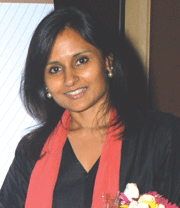 Where you stand on the issue of pre-school excellence depends on where you sit. The traditional classroom approach rests on the assumption that a predetermined number of students will all learn the same things, at the same time, from the same front-end person, in the same way, in the same place for several hours each day.
Where you stand on the issue of pre-school excellence depends on where you sit. The traditional classroom approach rests on the assumption that a predetermined number of students will all learn the same things, at the same time, from the same front-end person, in the same way, in the same place for several hours each day.
The new learning paradigm in pre-school education says that different children learn different things, from different people, in different places, in different ways, at different times. Excellence in early childhood education to me is about creating a lifelong love of learning.
The three elements that enable young children to love to learn in any learning environment are differentiation, integration and relevance. These are the defining benchmarks of excellence in early childhood education.
Differentiated learning. Little children don’t hate challenges, they love them. Provided the challenge is of the right level and a child is allowed to resolve it in the way she likes best. Whether working with a child’s ‘zone of proximal development’, the ‘multiple intelli-gences’ or varied ‘learning styles’, differentiation is about individualising the learning experience — different-iating lesson plans, creating enabling learning spaces and catering to learning style preferences.
Integrated learning. Young children should not be subjected to the ‘cells and bells’ model — identical small classrooms situated in narrow corridors, day broken up into neat little segments announced by bells that over time can programme children to switch gears on command. Pre-school children don’t see the divide between classroom, play-ground, art or physical education. Integrated learning helps them learn across areas, allowing teachers to expand their creativity to unimaginable levels.
Relevant learning. Young children learn from life. Relevance is about teaching children from what is familiar to them, and also about building the socio-cultural context of a child into the programme — triangulating children’s rights, parental and societal expect-ations. Relevant learning is what helps a child connect with the world around her.
Excellent pre-schools focus sharply on developing high-quality teachers, designing child-centred programmes and creating enabling physical environ-ments. With the rapid mushrooming of pre-schools across the country, very little thought is given to these vital factors. But these areas need constant revisiting.
Why do some places turn us off while others are spiritually uplifting? The human brain is hardwired to respond to the stimulus of the physical environ-ment. What’s important for creating age-appropriate and safe learning environ-ments at the macro level are patterns of day-lighting, natural ventilation, indoor-outdoor connections and appropriate spaces for work, play and thinking. Zooming in a bit further, learning environments must be structured for different learning styles and intellig-ences, with flexible learning spaces, resources and furniture that can be used in many ways.
Finally, all of a child’s development involves socialisation — places for one-on-one interaction, small groups or large school get-togethers, classrooms that open into large common spaces instead of corridors where children can interact and learn from adults other than their teachers and children of different age groups. Neutral coloured learning environments, with colour, definition and texture coming from children’s work is inspiring. Spaces should feel like home and speak of children’s rights, and expected/desired behaviour.
Enabling environments support a strong programme, but it cannot happen without a curriculum framework strong enough to help a teacher see her way to the end, yet flexible enough to allow customisation with relative ease and without loss of standards.
While an enabling physical environment and curriculum make differentiation, integration and relevance possible, without good teachers supported by continuous training, the last and longest mile will remain uncovered. “Hire the smile, train the skill,” is an excellent mantra. In the absence of strong teacher training programmes, much of the ‘how’ can only be taught on-the-job by internal trainers with strong links to the organisation.
All of this comes together with processes — constant feedback on teacher performance, structured classroom observations and multiple reviews through videos, photographs, children’s portfolios, assessments, etc — ensuring standards.
The great Greek philosopher Aristotle said: “We are what we repeatedly do; excellence is then not an act, but a habit.” Working towards achieving differentiation, integration and relevance in pre-schools cannot be an act; it must become a habit — with the aspiration that it has to happen all the time for all children.
Aiming to make children love learning for life, we shouldn’t forget what the poet Yeats said — “Education is the lighting of a fire, not the filling of a bucket”!
(An alumna of the Harvard Business School, Kavita Sabharwal is the Bangalore-based promoter-managing director of Neev Schools Pvt. Ltd which runs four pre-schools)